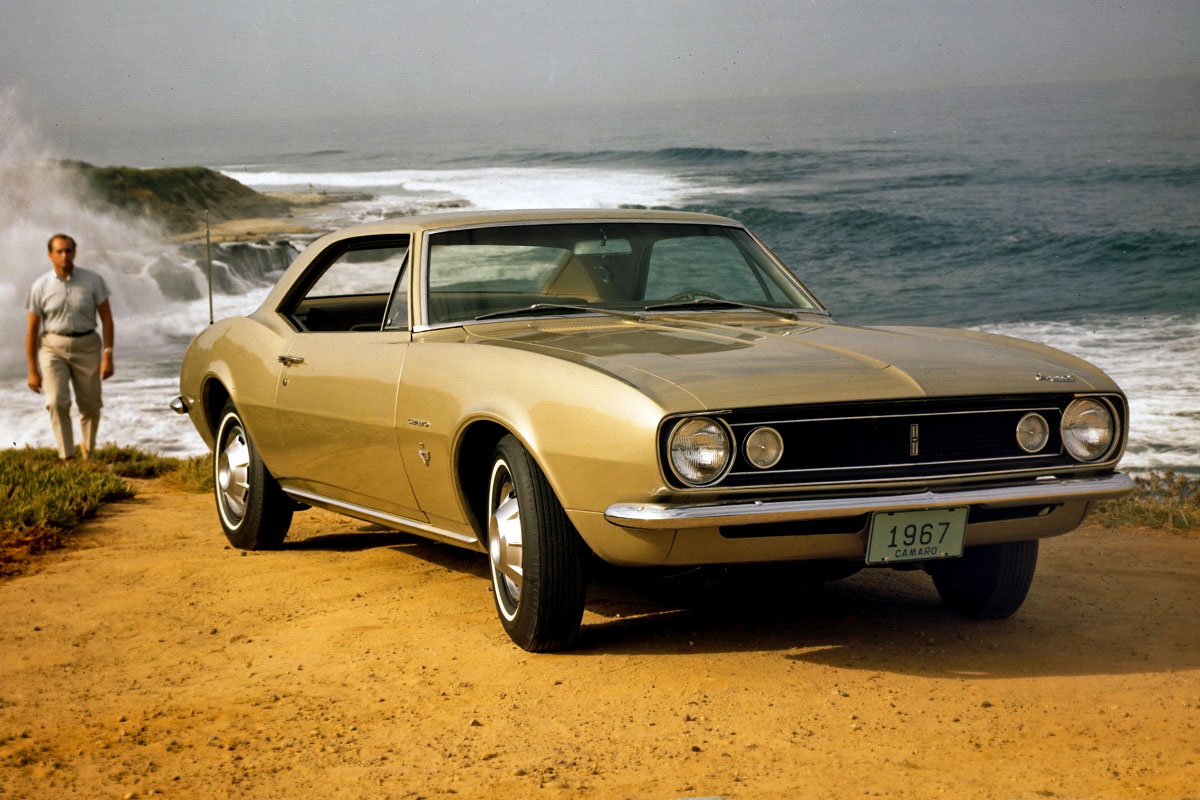
The beloved Camaro. People the world over know about this legend but you’re about to see exactly what it looked liked in each year of its evolution! We’ll start here in 1964…
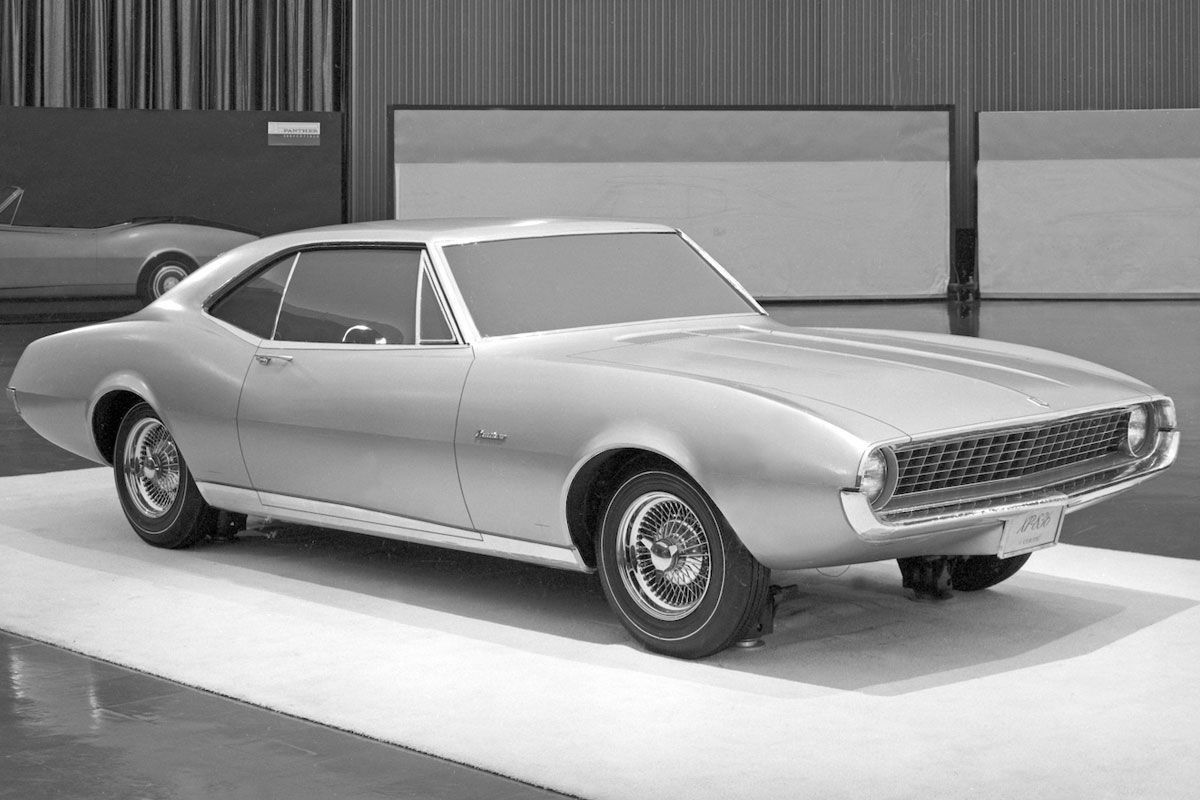
1964 XP-836
Rumor and speculation began circling in 1965 that Chevrolet was creating a competitor for the Ford Mustang. In 1966, at a General Motors press conference, general manager for Chevrolet Pete Estes announced the new car line, project designation XP-836. The name Chevy picked for the vehicles was Camaro, which they stated meant “warm friends” (the word “Camaro” was mistaken for French slang). The picture shows an XP-836 model that resembles the final design for the Camaro, which premiered in September 1966.
Up next: See the 1967 Camaro Coupe…
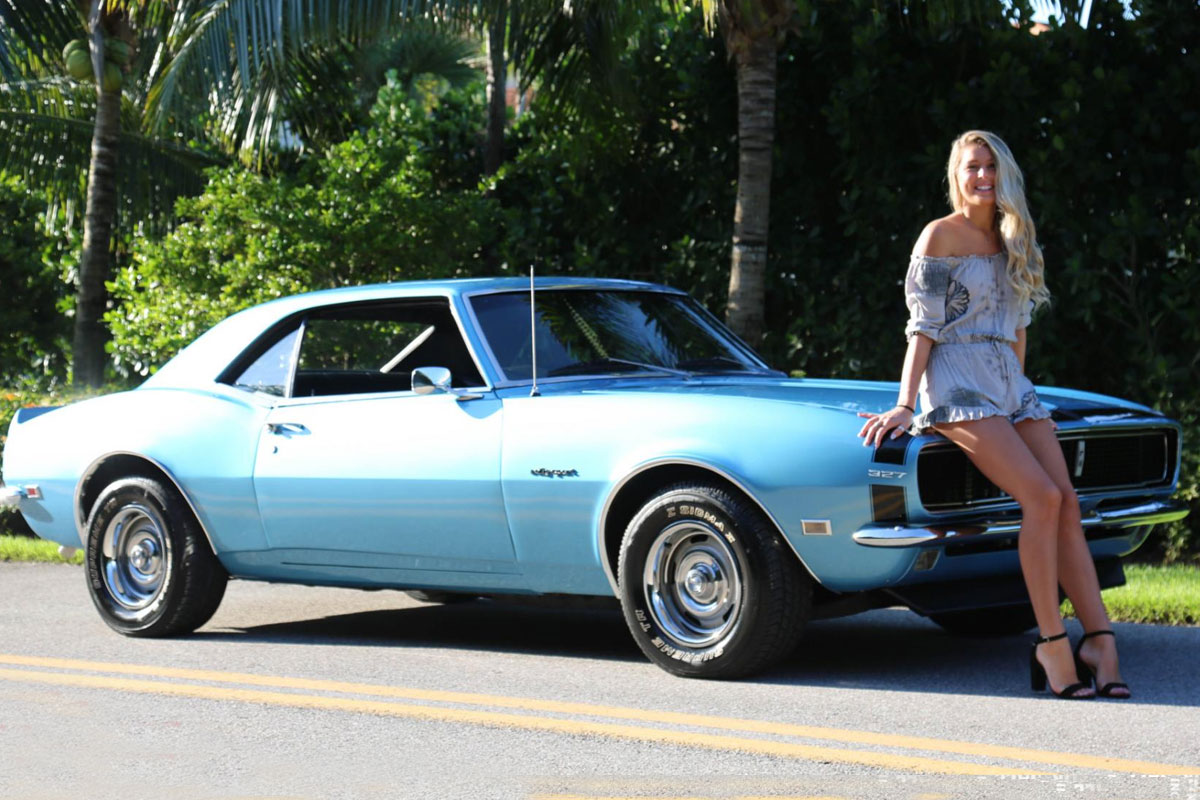
1967 Chevrolet Camaro Coupe

The first-generation of Camaro began when the first-line of Camaros went on sale on September 29, 1966. The model year was 1967, with a base price of $2466. It was a 2-door car with 2+2 seating and rear-wheel drive.
The vehicle had a GM F-body platform and included a lot of different options, along with four different small-block V8s and two big-blocks. It sold 220,000 its first year.
Up next: See the 1967 Camaro RS Z28…
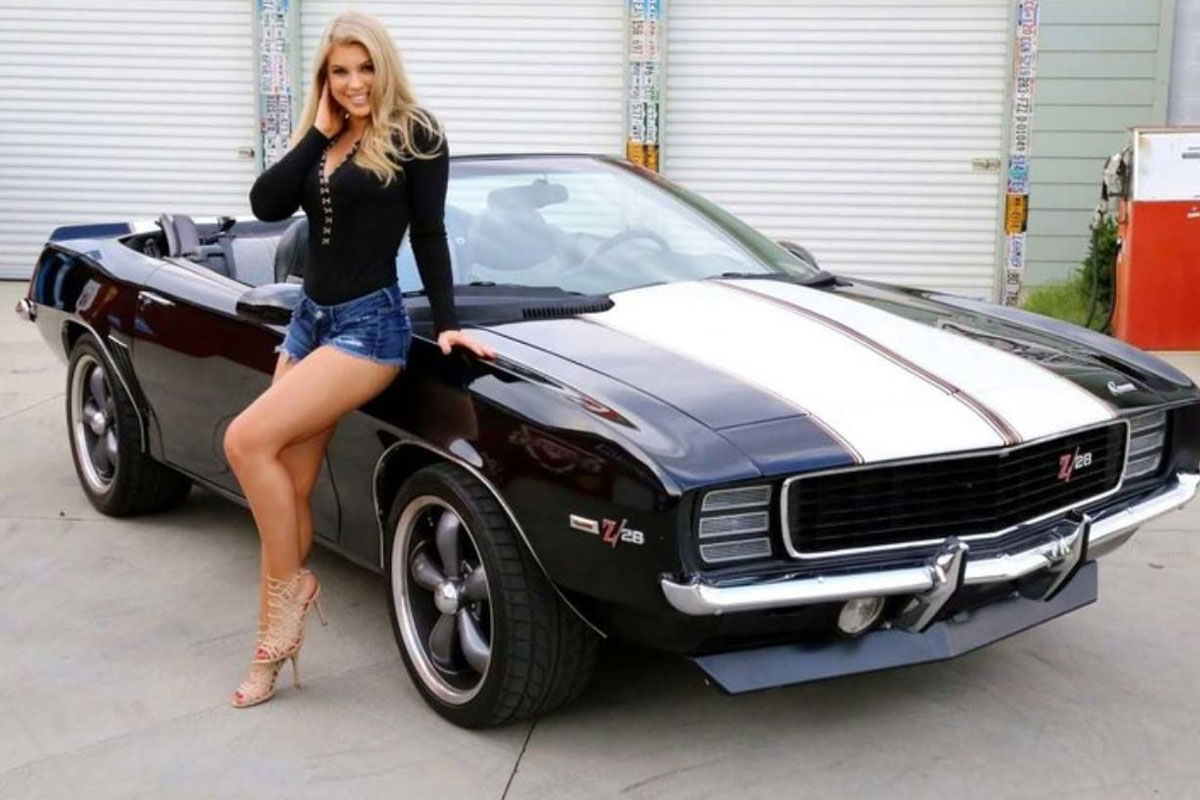
1968 Chevrolet Camaro RS

1968 Camaro’s remained close in design to their 1967 counterparts. The most significant addition was the Astro Ventilation and a fresh-air inlet system. The side vent windows were also absent.
Up next: The 1969 Camaro Z/28…
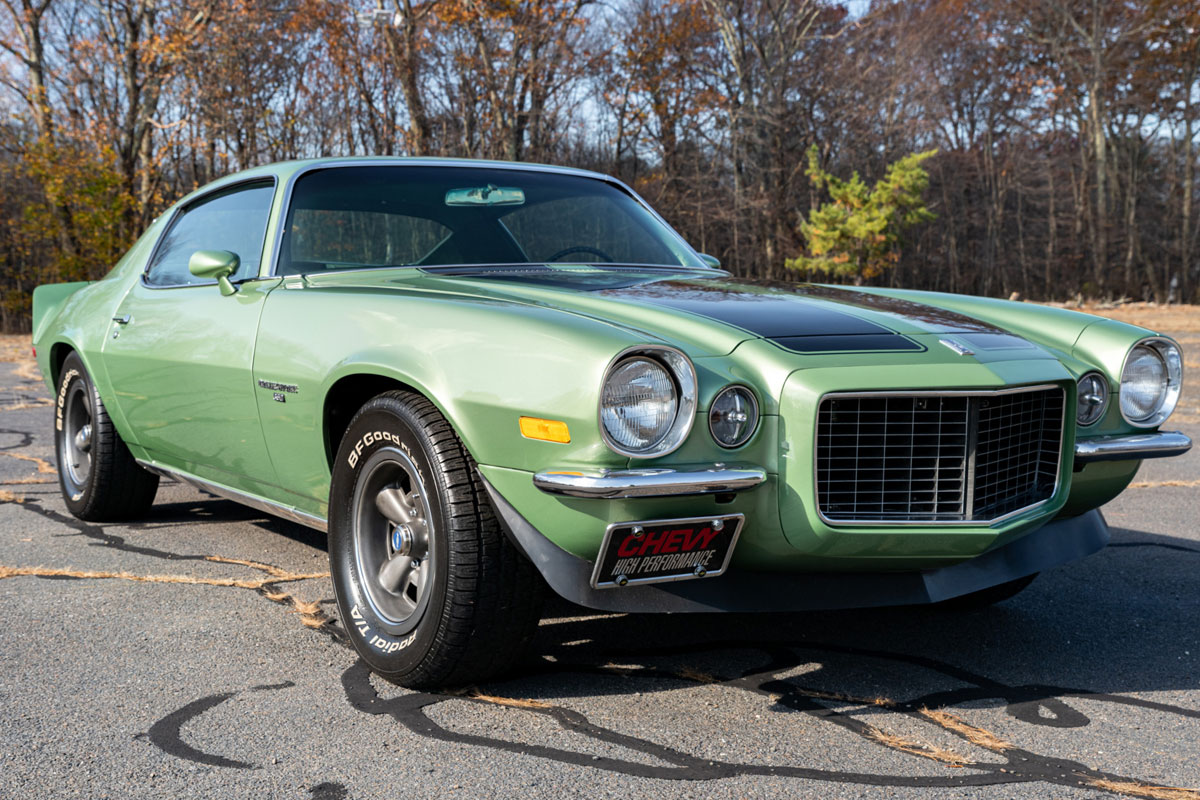
1969 Chevrolet Camaro Z/28 Convertible

The 1969 Camaro was not too different from the rest of the generation mechanically but had a lot of changes in the bodywork that gave the car a sportier style. As with previous years, a convertible option was available.
The Z/28 had a new 69 Hurst shifter. Two special-order, low-volume, and race-oriented models of the Z/28 were available.
Up next: See the 1969 Camaro RS/SS…
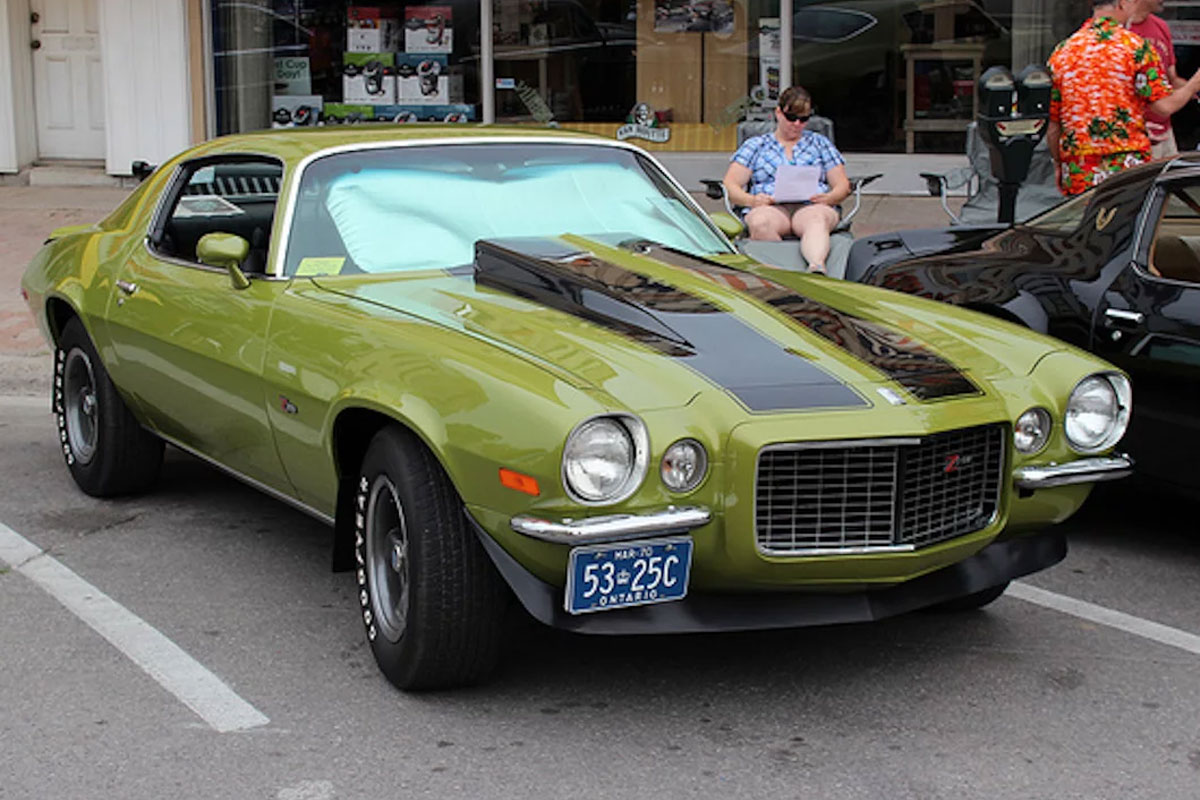
1970 Chevrolet Camaro RS

The second generation of Camaros would last twelve years with the first to reach the market in February 1970, making it a 1970½ model. This Camaro was heavier and bigger than first-gen. The design was inspired by the classic Ferrari Lusso 250 GT.
Up next: See the 1968 Camaro continues…
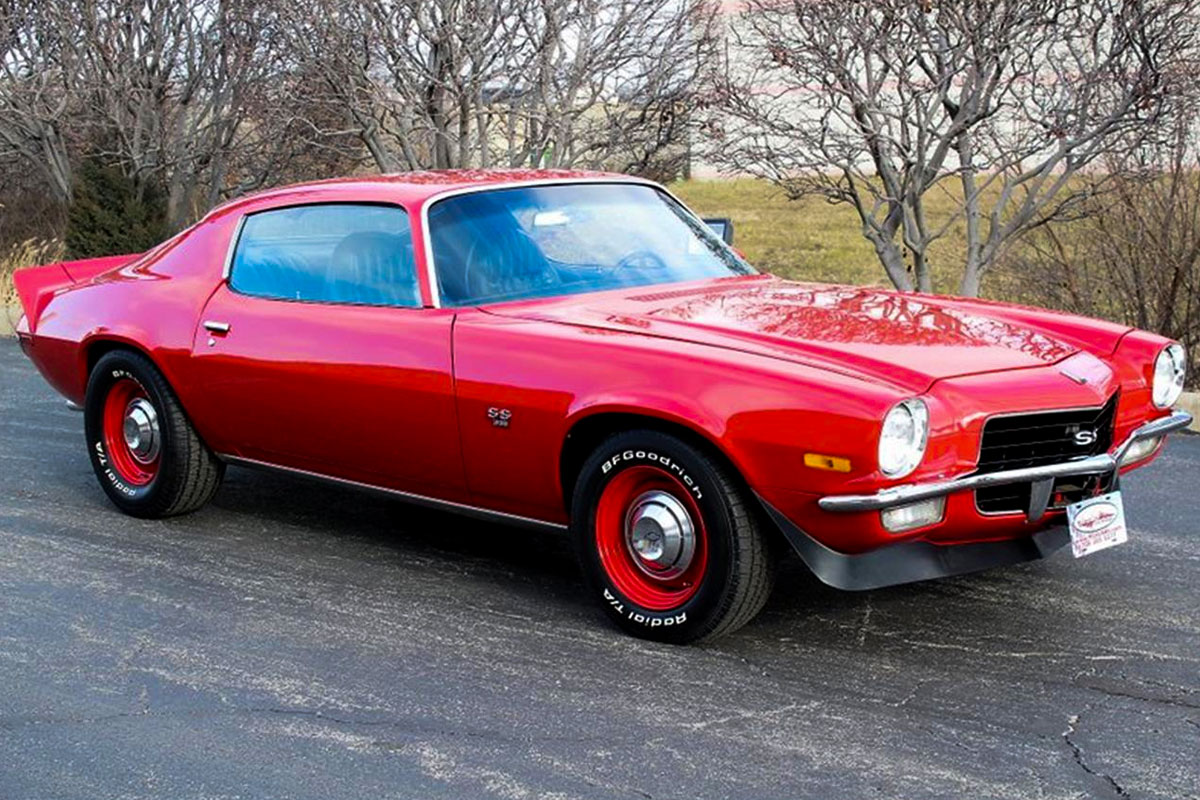
1971 Chevrolet Camaro Z/28

The Z/28 1970½ Camaro had an LT-1 360 hp 350 cu in (5.7 L) V8. Chevy built the engine from beginning to end with premium parts and components. The vehicle was capable of reaching 60 mph in 5.8 seconds. In the 1971 Z/28 models, however, the LT-1 350 V8 was dropped from 360 hp to 330 horsepower.
Up next: See the 1972 Camaro SS…
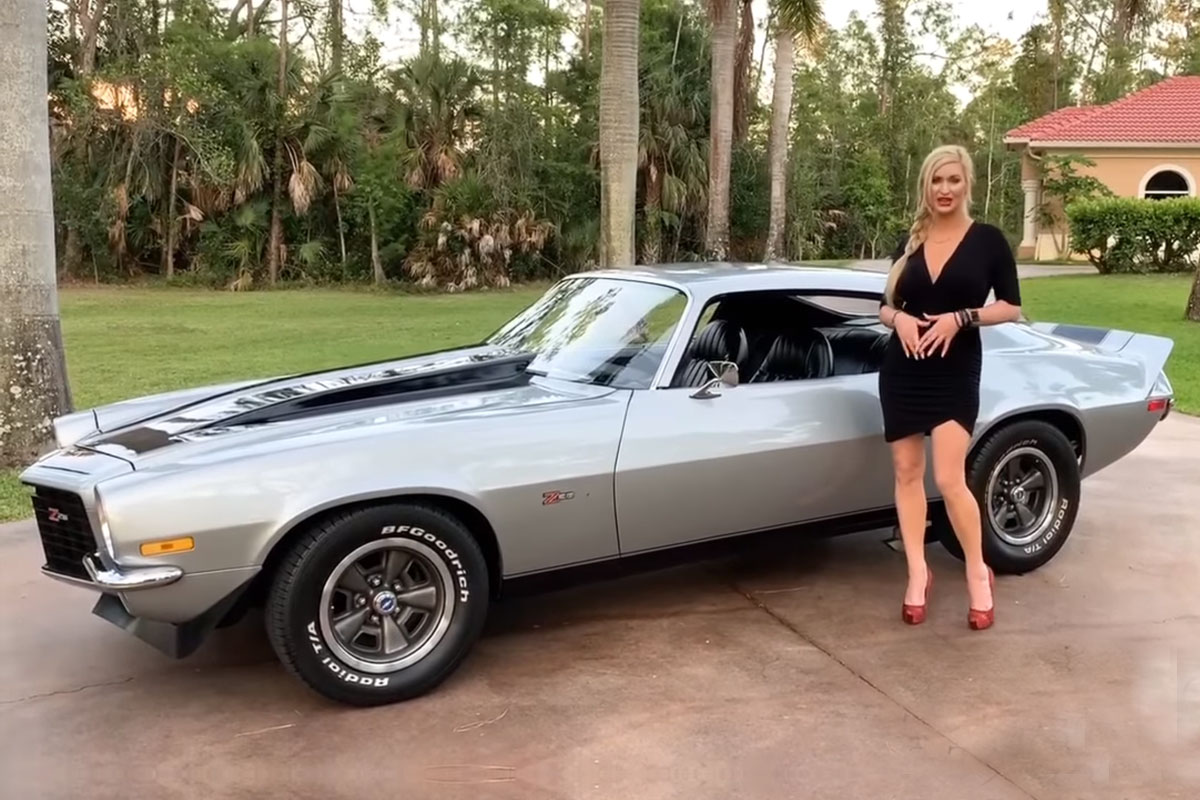
1972 Chevrolet Camaro SS

There is no getting around it 1972 stunk for Camaro. They faced declining sales, a 174-day strike at a Norwood plant, and 1973 federal bumper standards caused them to scrap 1,100 incomplete vehicles.
1972 was also the last year the SS 396 and SS 350 were available, with only 970 SS 396s produced. 1972 was also the last time where Camaro presented a Big Block from the factory as an offer. Like the Z/28, the SS saw a decline in horsepower.
Up next: See the 1973 Camaro RS…
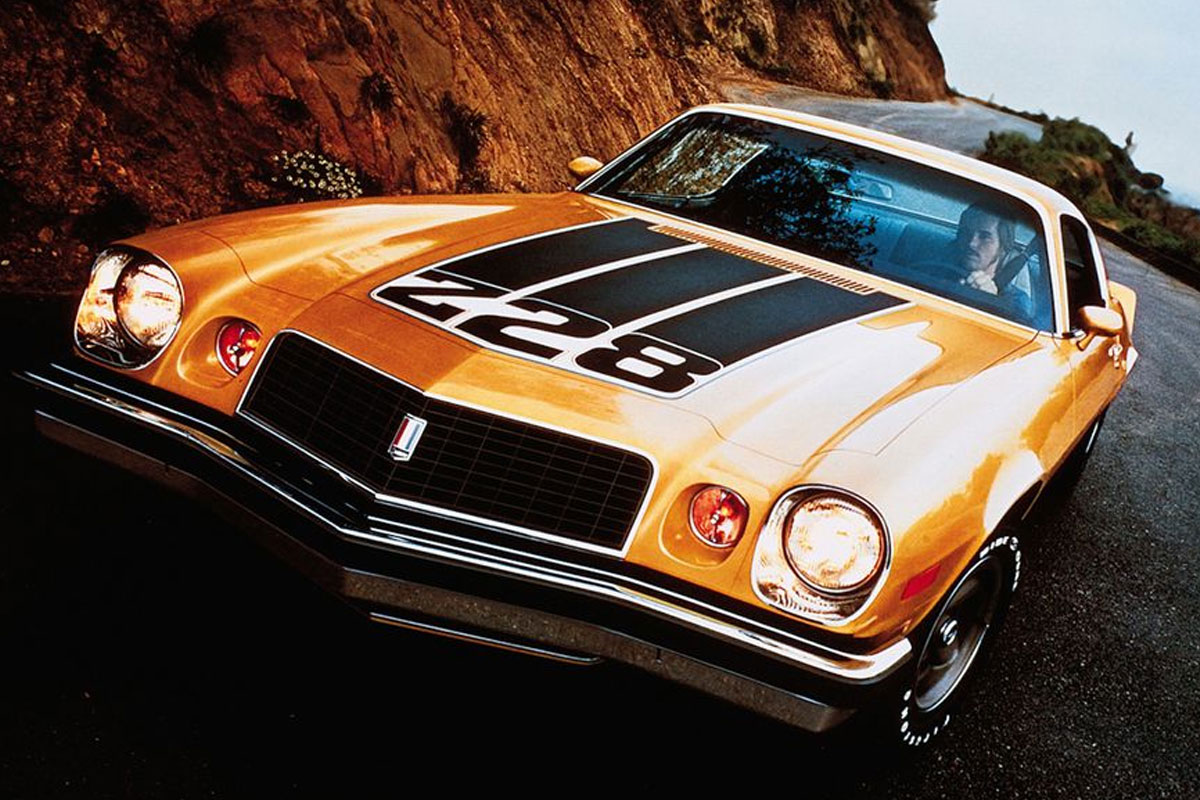
1973 Chevrolet Camaro Z/28

In 1973, Camaro hit back. Sales rose to 96,751 units sold, which, while slight, was much better than the previous year. Chevrolet cut the SS model in favor of an LT model, which could be ordered with the Z/28 or the RS package. The Z/28 stripes and decals were dropped with the LT combination.
As for Z/28, it included 350 CID, 245 hp V8, which was 10hp less compared to the 1972 model. The engine also went from solid-lifters to hydraulic tappets. While it had less power, Chevy offered air continuing for the first time in this package.
Up next: See the 1974 Camaro LT 350…
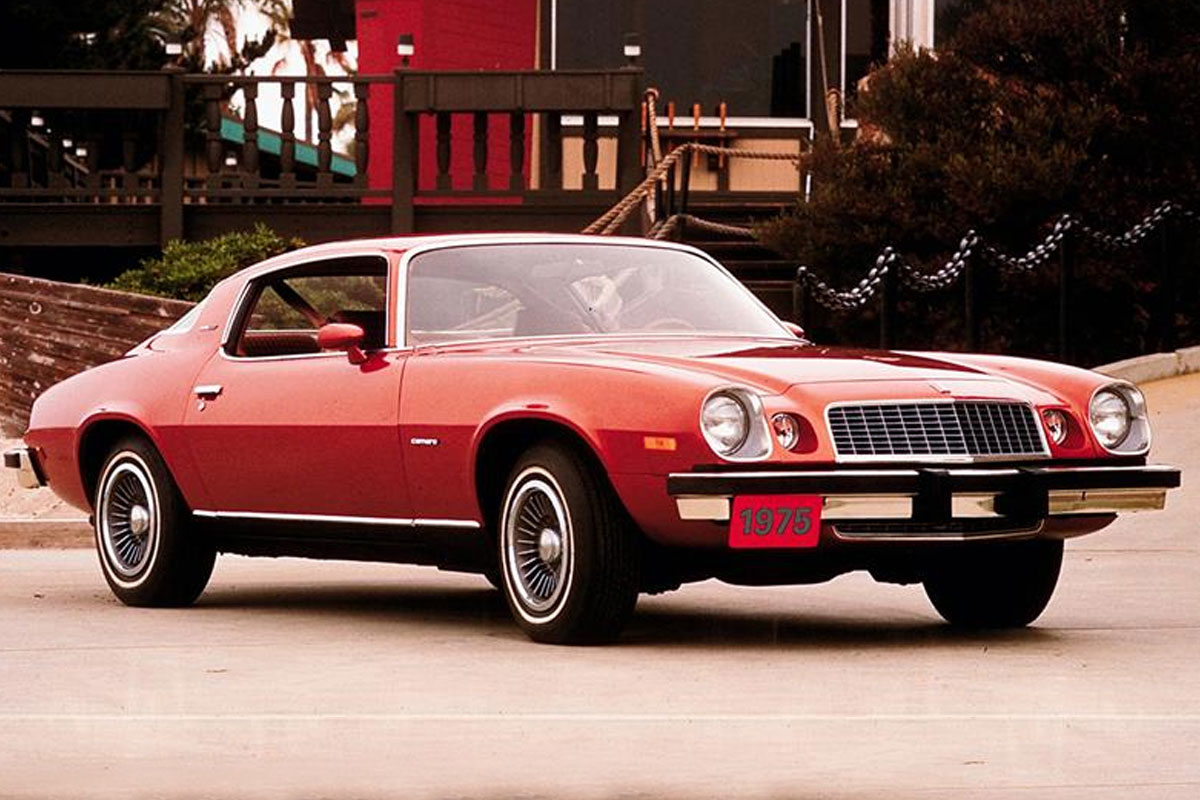
1974 Chevrolet Camaro Z/28

1974 saw severe changes with the Camaro model. Adhering to federal bumper guidelines, Chevy significantly altered the design. Somehow, Camaro fashioned aluminum bumpers that managed to look stylish and even changed the nose and tail to match. While the 1974 Z/28 may have some fresh graphics, the car became so underpowered compared to previous models Chevy dropped it the next year. Despite the problems, the 1974 Z/28 model sold 13, 80 units, which was the highest sold 2nd-generation Z/28 at that point.
Up next: See the 1975 Camaro…
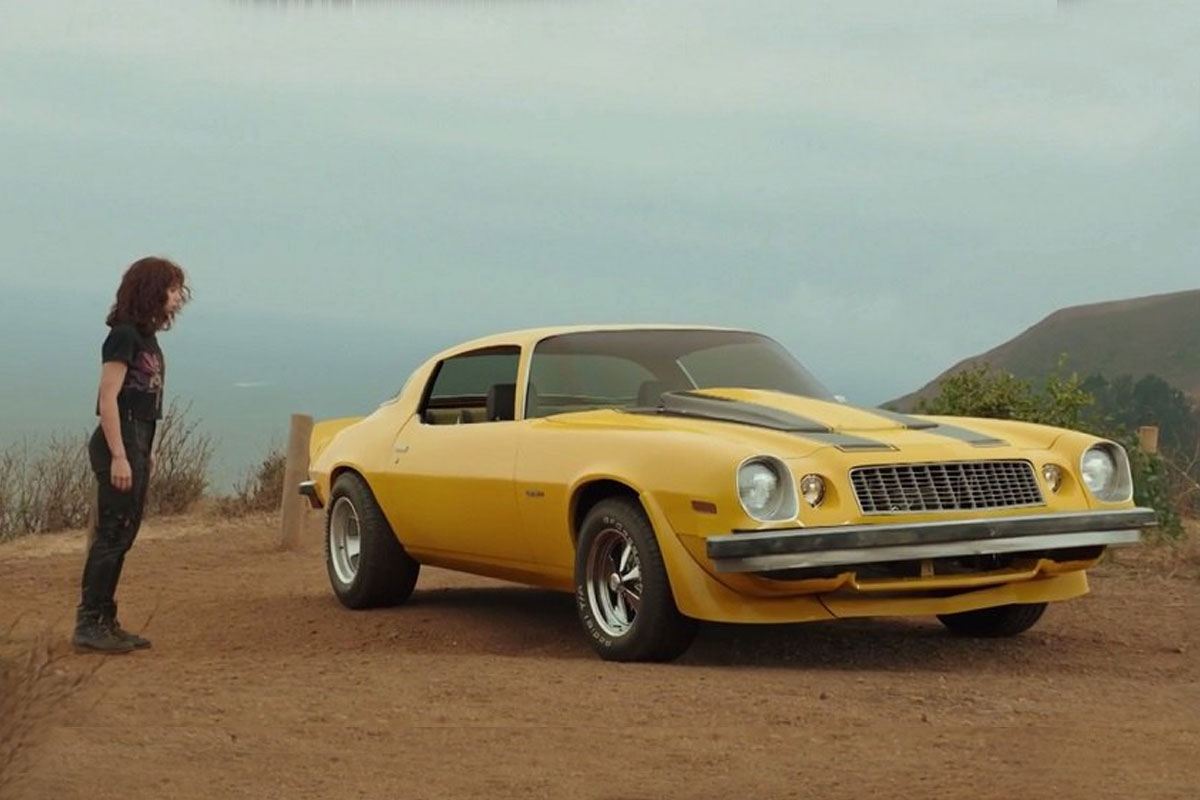
1975 Chevrolet Camaro

With the new 1975 Camaro, it had a wraparound rear window, which made it easier to see. This model also included catalytic converters, which further hindered performance.
The 1975 Camaro only had 145 horsepower with the two-barrel carburetor. We should mention, the Rally Sport model returned after one year of absence.
Up next: See the 1977 Camaro…
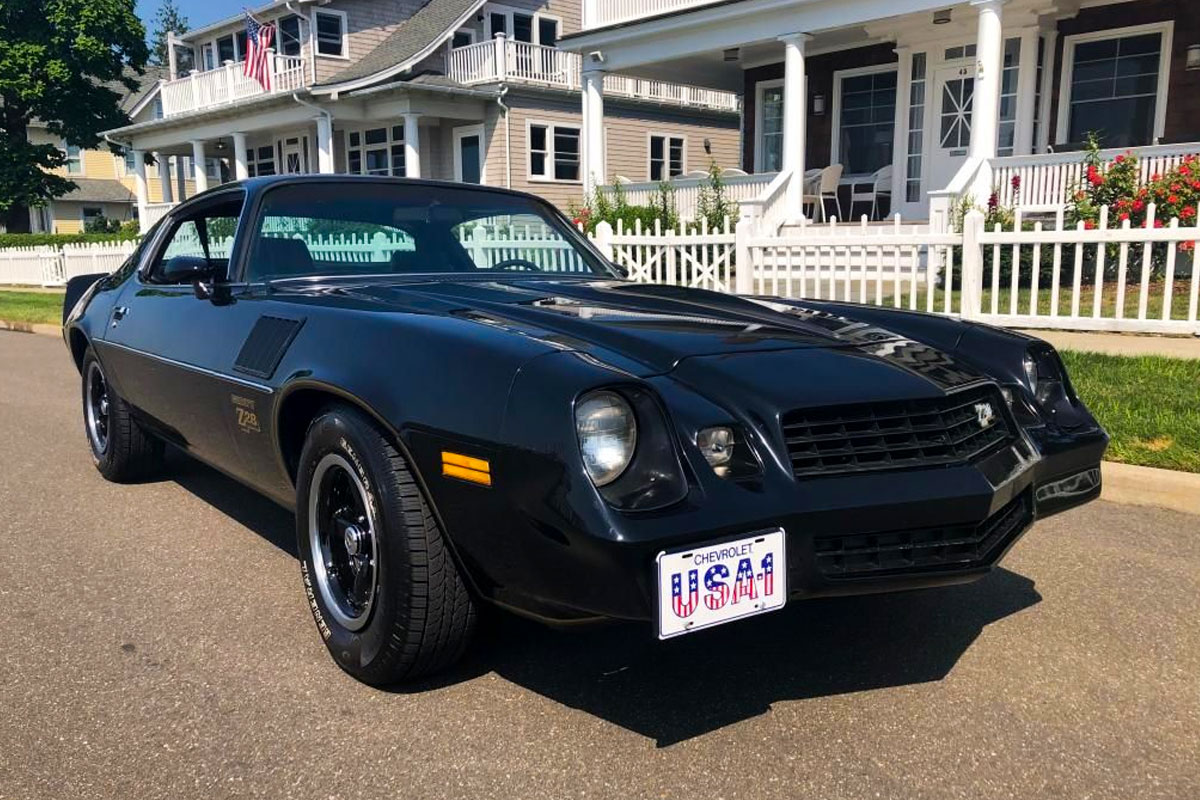
1977 Chevrolet Camaro

1977 was a big year for the Camaro. For the first time, the Camaro outsold the Ford Mustang. GM also produced the highest number of coupes at 218,853. New features included a 250 cu in (4.1 L) I-6, which was now the standard engine for the sports coupe and luxury LT models. Other highlights included intermittent windshield wipers and standard hidden wipers.
Up next: See the 1978 Camaro Z/28…

1978 Chevrolet Camaro Z/28

Along with fancy new windshield wipers, 1977 also marked the return for the Z28. The 350 V8 made it to 185 hp. Chevy also emphasized suspension with special springs, sway bars on the front & rear and specialized shocks. The results made steering a lot faster.
In 1978 the design was further improved with a new body-color urethane front & rear fascia and redesigned taillights. The Z28 also received fender vents and an attractive hood scoop. Sales again topped all previous years at 272,631 units, which included 54,907 Z28s.
Up next: See the 1979 Camaro RS…

1979 Chevrolet Camaro RS

The Rally Sport (RS) package returned after two years in 1978. This time the RS was a separate model divergent from an RPO with a T-top option. In 1979, Chevrolet offered a specific model of the RS with a two-tone paint job.
Up next: See the 1981 Camaro Z/28…

1981 Chevrolet Camaro Z/28

The 1981 model was the last vehicle in the long second-generation of Camaro, which ran eleven years. Chevy was once again cut the RS package, and the exterior received little treatment. Inside the car was a different story.
It was of the first pony car to have a CCC (Computer Command Control), which manipulated the carburetor mixture, included an ALDL Connector, and added a “check engine light.”
Up next: See the 1982 Camaro Z/28…
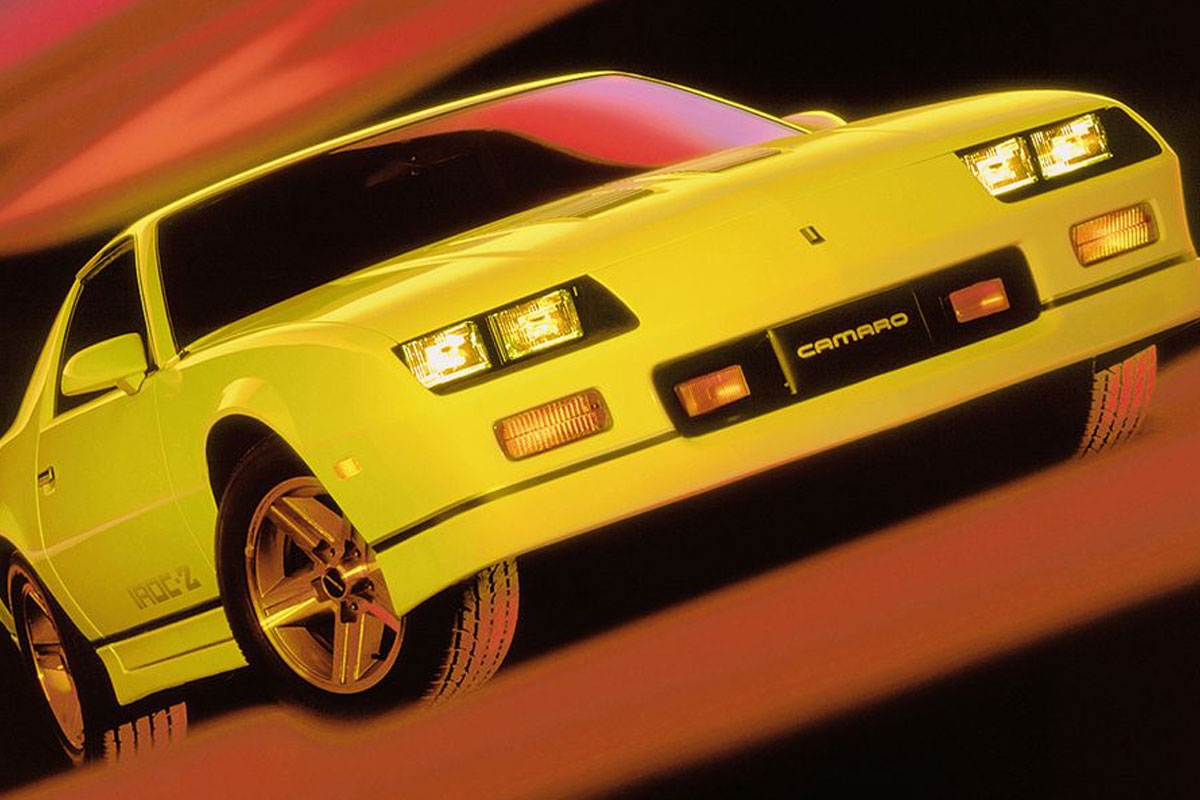
1982 Chevrolet Camaro Z/28

The third-generation of Camaro came in 1982. The vehicle was completely new and did not adhere to designs of the past with features such as a front windshield that declined 62 degrees. This Camaro also had struts in the front and a new coil-spring rear suspension.
Unfortunately, the cars still left a lot to desire in the power department. Sports Coupes had a 2.5-liter (151 cu in) LQ9 four-cylinder engine, which had a measly 90 hp. The Z28, on the other hand, had a 5.0 L LG4 4-bbl V8 engine rated at 145 hp, a far cry from yesteryears. Still, it looks cool and handled well, receiving many positive reviews.
Up next: See the 1985 Camaro IROC…
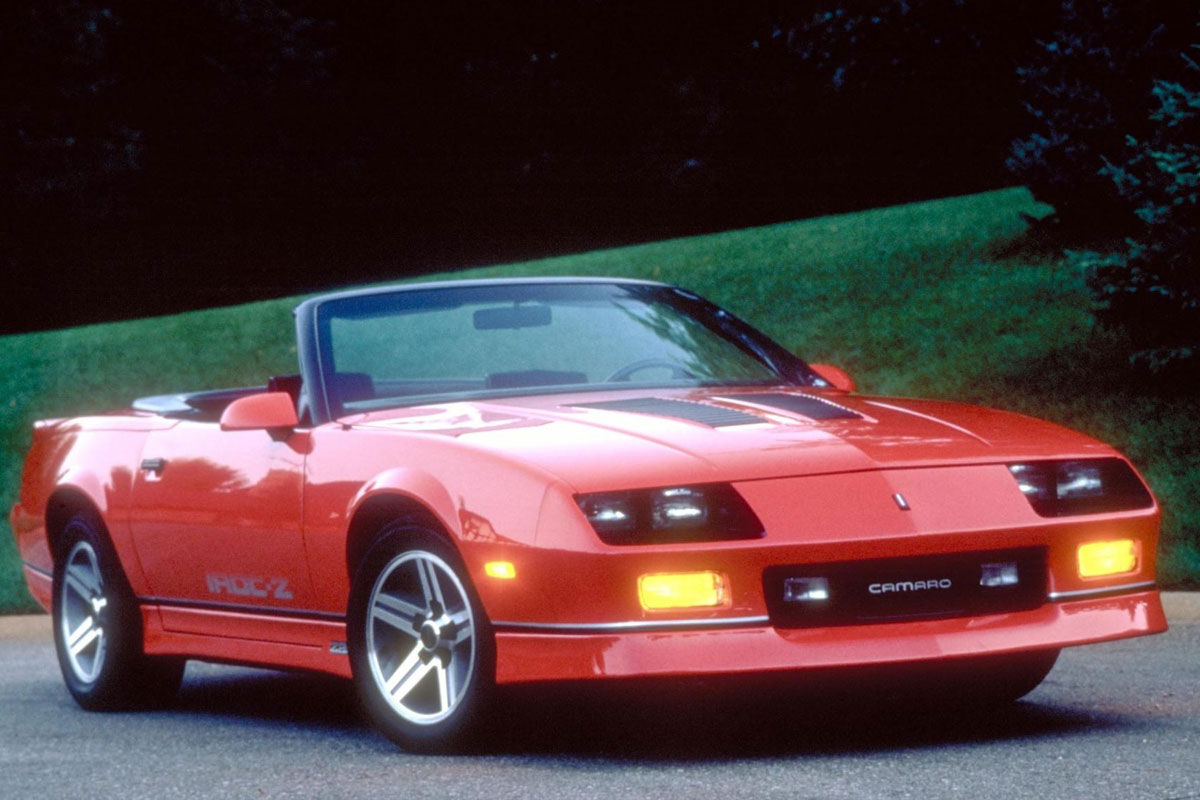
1985 Chevrolet Camaro IROC

Named after the International Race of Champions, Chevrolet introduced the Camaro IROC-Z in 1985. This year marked a significant change in the generation. It had upgraded suspension, specialized shocks, a new steering/frame brace, larger sway bars, and 16-inch five-spoke wheels.
It even had an optional Tuned Port Injection (TPI) version of the 5.0-liter V-8, which rated the car 215hp. The 1985 Camaro-IROC –Z is definitely worthy of its namesake.
Up next: See the 1987 Camaro…

1987 Chevrolet Camaro

In 1987, the IROC-Z model was equipped with a 145 mph speedometer, which became its standard. Another welcome feature made its return, the convertible option, which was not available since 1969. Look at it and all its convertible-goodness. Sadly this marked the end of the Z28 model until…well, read on to find out.
Up next: See the 1989 Camaro RS…
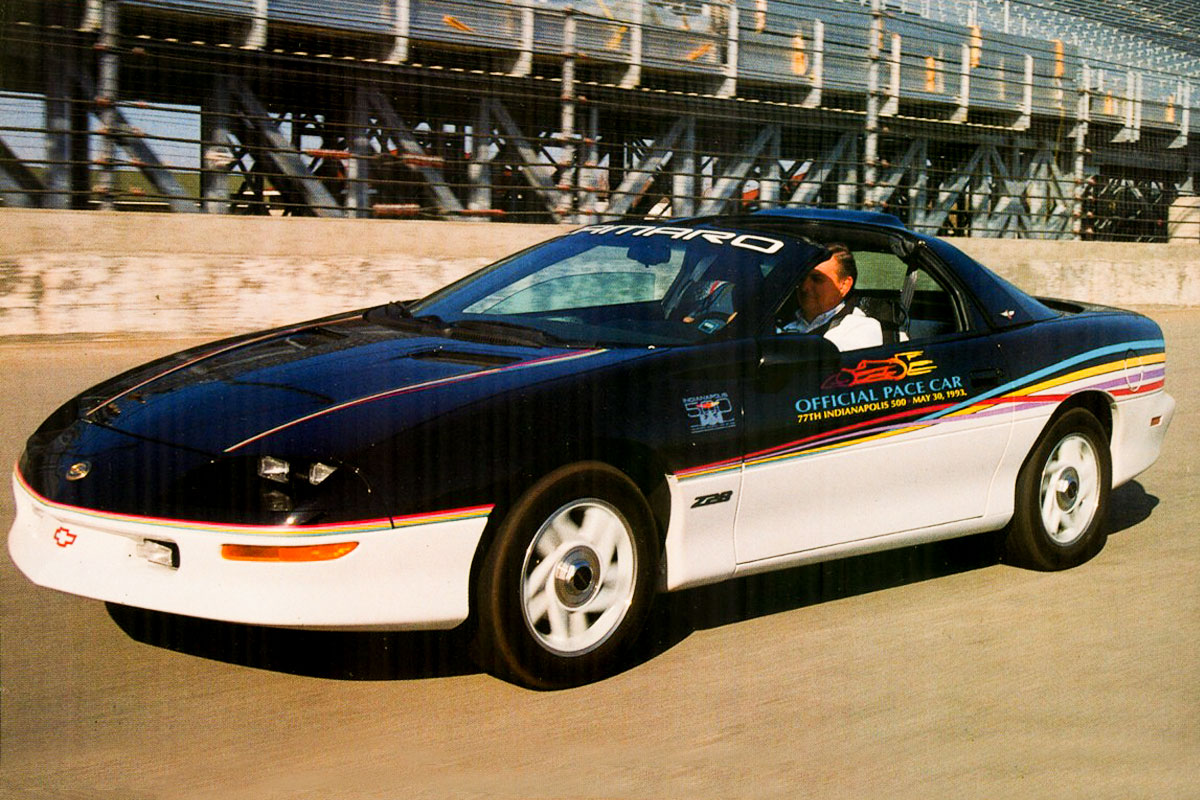
1989 Chevrolet Camaro RS

The Z28 is back! We hope we didn’t keep you waiting. In 1990, Dodge sponsored the International Race of Champions and, with it, took the rights to the IROC name. As a result, Chevrolet chose to use the Z28 label for its high-performance 1991 models. These Camaros had hood “blisters” and high rise spoiler if you like that sort of thing. 1992 would mark the end of the third generation.
Up next: See the 1993 Camaro Pace Car…
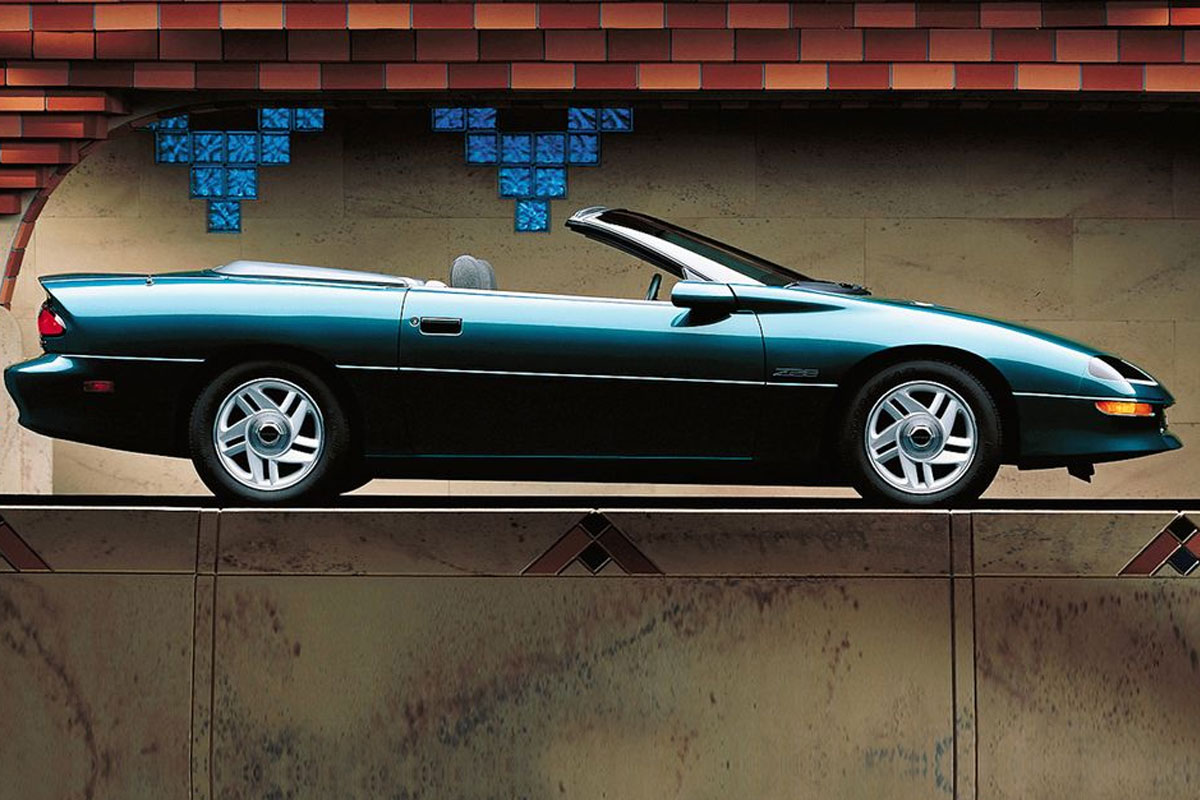
1993 Chevrolet Camaro Pace Car

The fourth-generation began in January 1993. The new Camaro had sheet molding compound built in the design, standard 5-speed manual transmission, a base 3.4 L pushrod V6 engine, and improved front/rear suspension. As for the Z28, the model came with a 5.7 pushrod LT1 V8 engine with a 275hp rating. The Z28 also had rectangular dual exhaust tips to help people visually separate it from the base model. The same year, the Camaro returned for the fourth time as a pace car in the Indianapolis 500. Chevy produced six hundred thirty-three replicas.
Up next: See the 1995 Camaro Z/28…
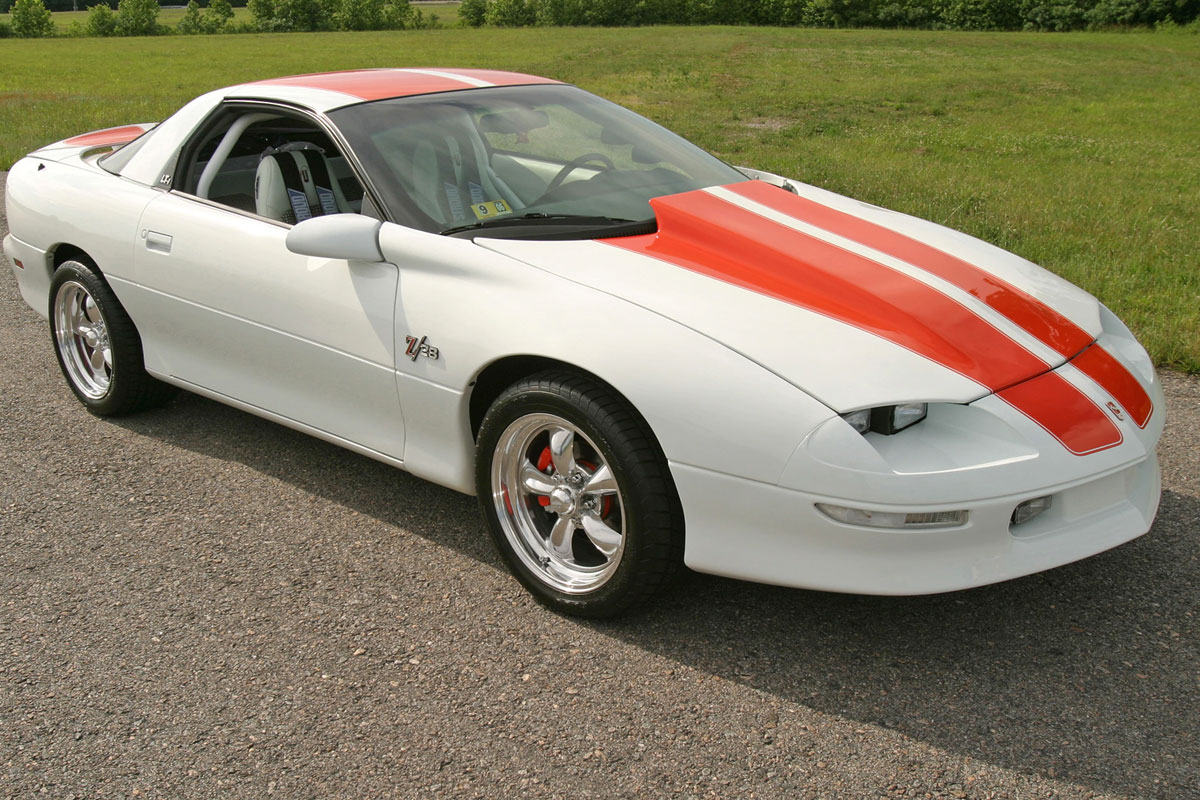
1995 Chevrolet Camaro Z/28 convertible

In 1994, a convertible model was available and carried on through the subsequent years of the fourth generation of Camaro. As for the 1995 model, which made it a big deal was for the first time, customers could choose their V-6 power engines. The options available included GM’s 3800 3.8 liter V-6 and the 3400-liter V-6. The 3800 would replace the 3400 in 1996.
Up next: See the 1997 Camaro Z/28…
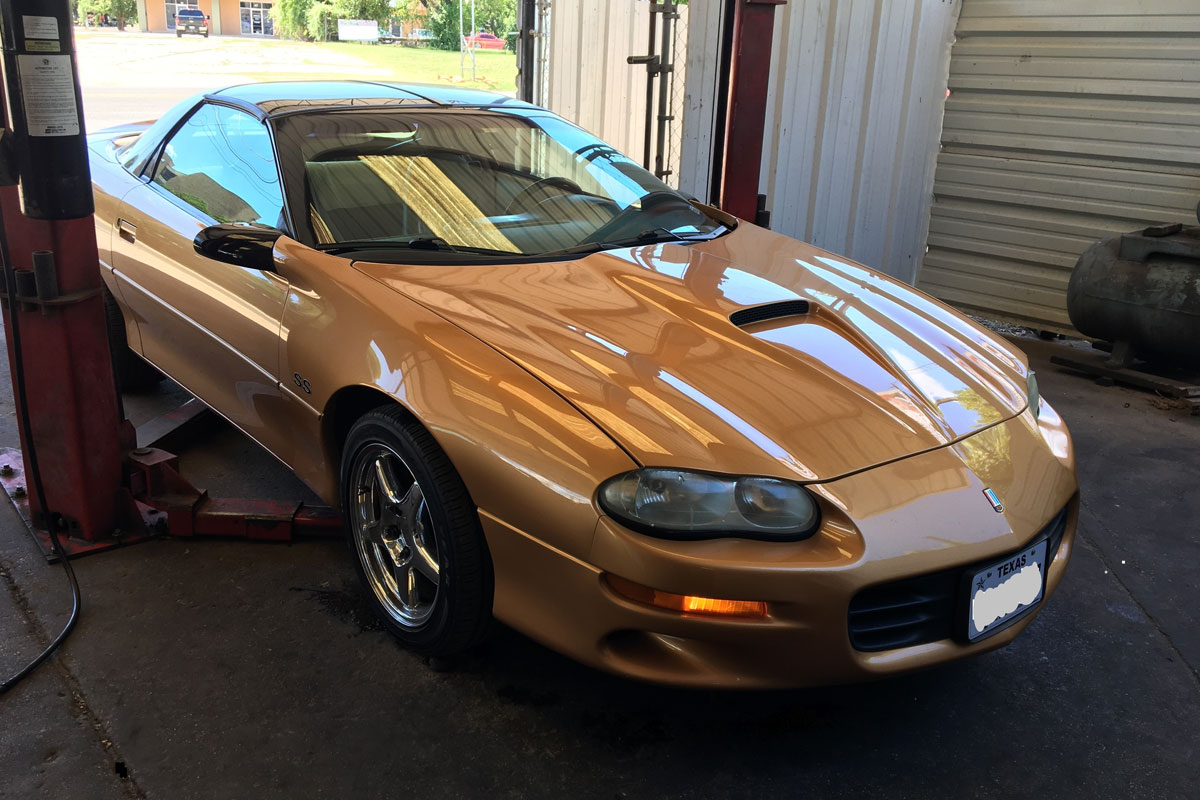
1997 Chevrolet Camaro Z28 convertible

In 1997, Chevrolet put out a special edition Camaro Z28 to celebrate the car’s 30th anniversary. It was white with orange stripes. The coloring might be homage to the 1969 pace car.
Up next: See the 1998 Camaro SS…
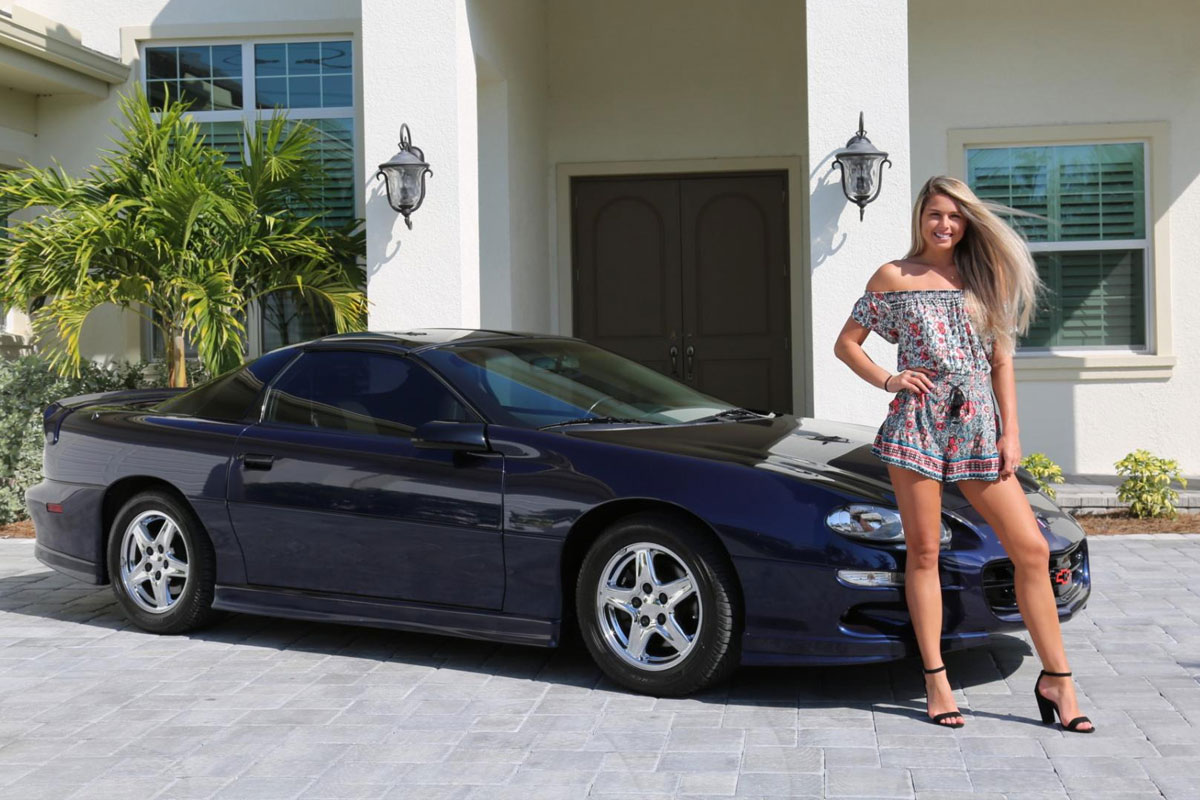
1998 Chevrolet Camaro SS

In 1996 the SuperSport (SS) returned. It had a new wheel and tire set that led to superior braking and handling over the Z28. With the 1998 Camaro, it had a new front clip that altered the design from the group of four square inset headlights.
Chevy also exchanged the LT1 engine for the new 5.7 L LS1 V8 engine, which rated at 305 horsepower. For this model, GM brought production of the SS in-house rather than the assembly plant in Canada.
Up next: See the 1999 Camaro Z/28…
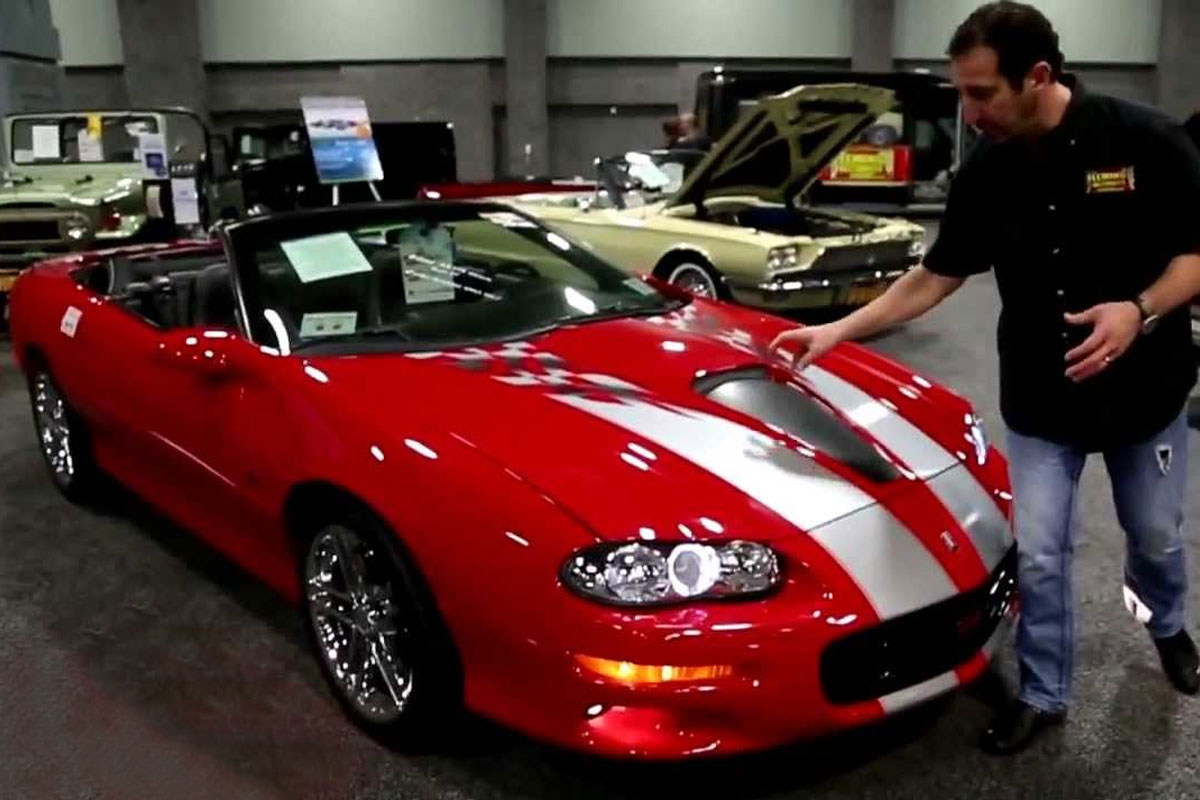
1999 Chevrolet Camaro Z/28

Here are some interesting facts about Chevrolet Camaros gearheads should know. The most significant change with the 1999 Camaro models was the addition of a plastic fuel tank that held more gallons than previous metal units. You also had a new “oil change” light, which is pretty sweet. Also, Chevy added a Torsen differential for the 1999 Z28 and SS models.
Up next: See the 202 Camaro SS Z/28…
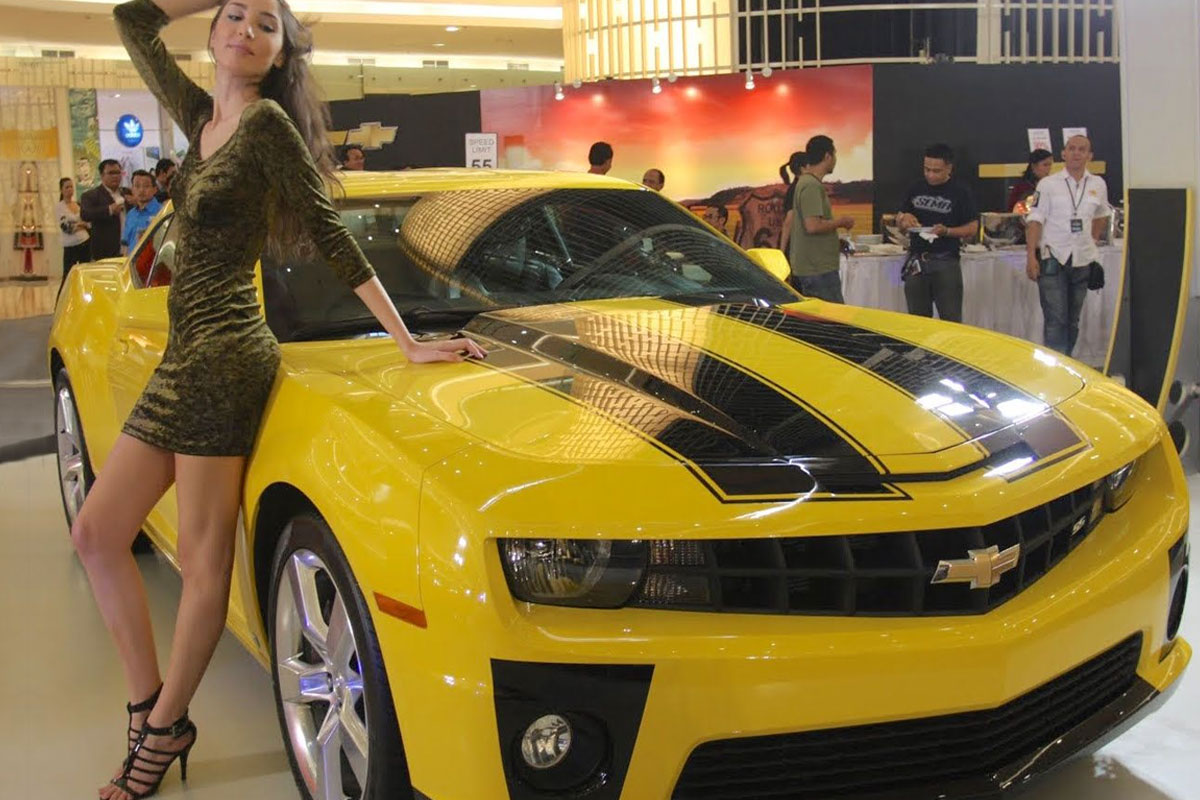
2002 Chevrolet Camaro SS Z/28 convertible

For Camaro’s 35th anniversary in 2002, Chevy put out a Z28 SS coupe special edition. The biggest change was including an LS6 engine introduced in the 2001 model.
However, there was not much time for celebration. Chevy essentially killed the Camaro brand off due to the fourth generation having slow sales and overcapacity at the plant. This seemed like a permanent decision until…
Up next: See the 2010 Camaro SS…

2010 Chevrolet Camaro SS

Chevrolet came to their senses and began working on a new design in spring 2005. Sangyup Lee designed the concept based on the Holden GM Zeta platform. Chevy unveiled the Camaro concept at the 2006 North American International Auto Show, where it won “Best In Show.”
They continued to show concept cars for a couple more years. In 2009 the Camaro fifth-generation officially started with the 2010 model available on the market in the first quarter of the year. The vehicle was based on the 2006 concept and had an Australian chassis with independent suspension. The base RS form was powered by 304hp,3.6- liter DOHC 24-valve V-6.
An SS option was available with a 6.2-liter LS-series V-8 with a jaw-dropping 426 horsepower rating. In the image, you see a Transformers variant based on Bumblebee from Transforms (2007). The Transformers’ appearance package cost $955 and ceased production in January 2010.
Up next: See the 2013 Camaro SS/RS…
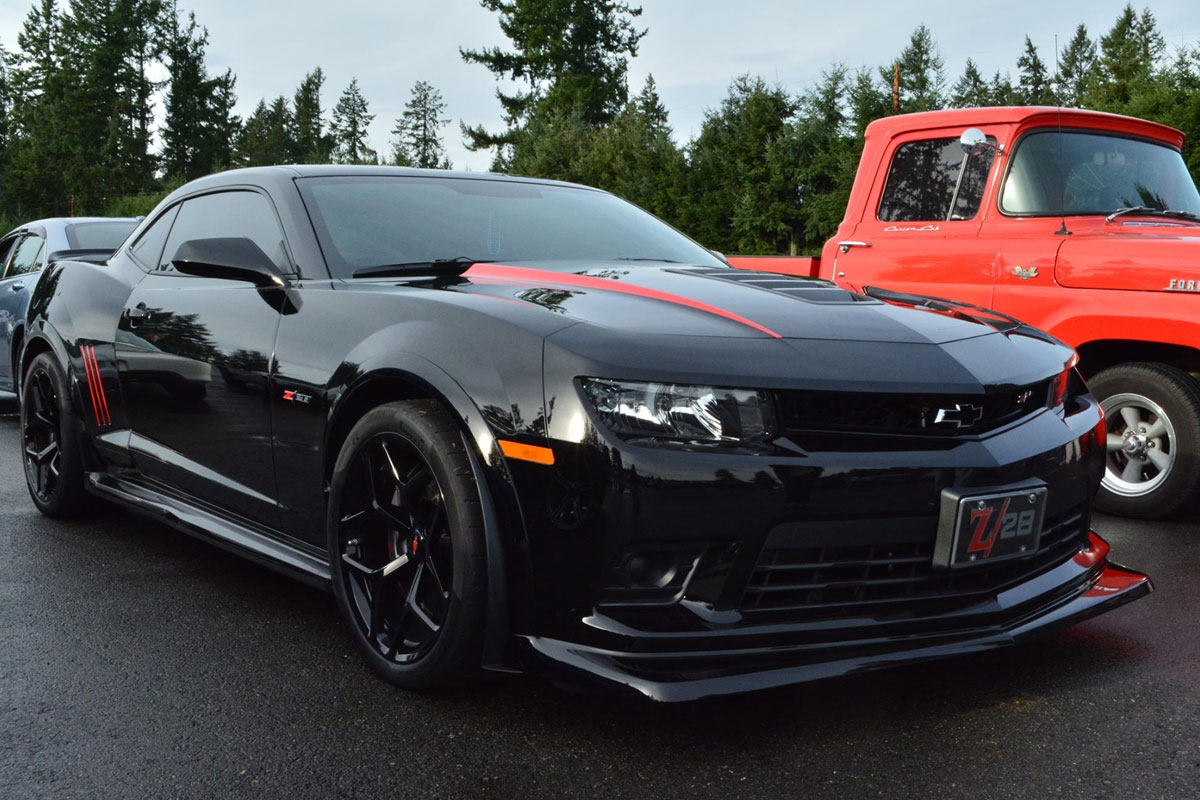
2013 Chevrolet Camaro SS/RS

The 2013 model saw a series of updates. The SS model, for instance, included variable effort electric power steering as well as the optional dual-mode exhaust system and Recaro buck seats. Other changes to all versions included frameless inside rearview mirror, hill start assist on manual transmissions, and ZL1- style shift knob. The RS package included alterations such as high-intensity discharge headlamps and 20- inch wheels. Plus, way more colors.
Up next: See the 2014 Camaro Z/28…
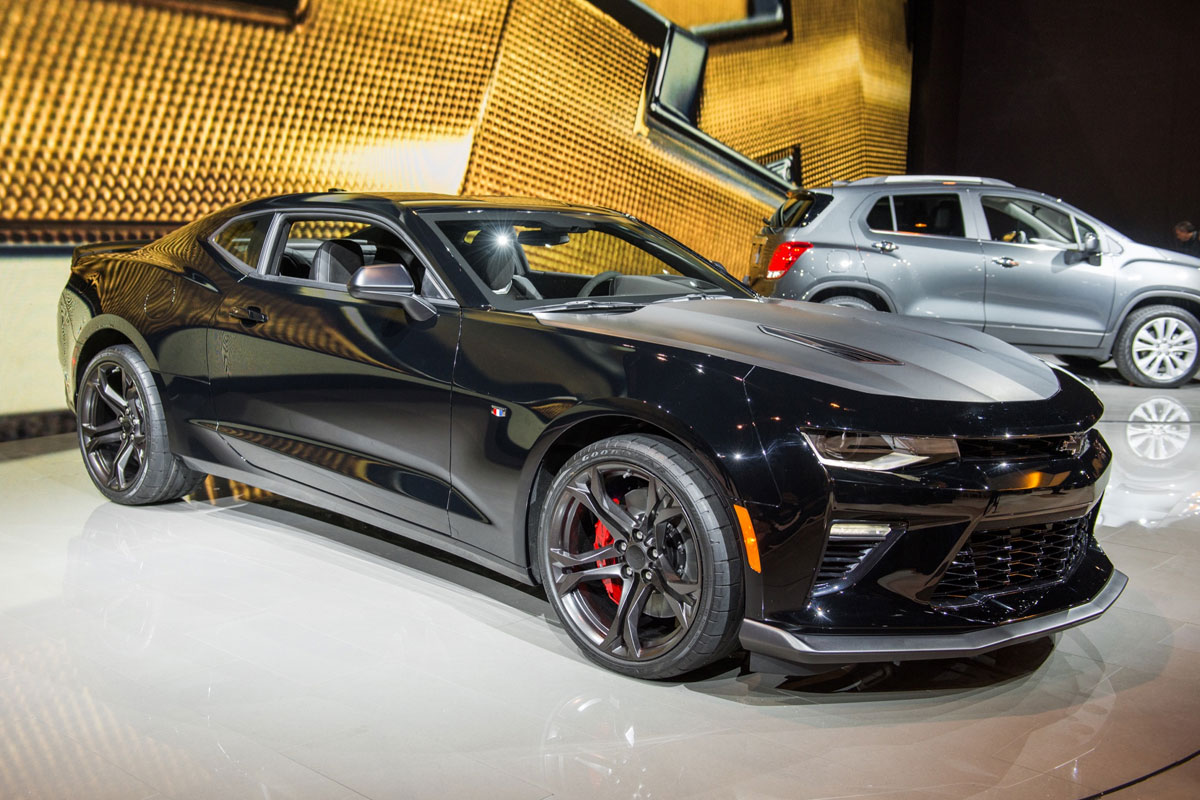
2014 Chevrolet Camaro Z/28

The 2014 Camaro had a serious facelift, including a new head and tail light assembly as well as new front and rear redesigns. The Z/28 also returned with 305-mm wide tires and a 7.0 L LS7 V8 engine giving it…wait for it… a 505 horsepower rating! Motor Trend magazine bestowed the Camaro Z/28 2014 Best Driver’s Car. Who can blame them, definitely one of our favorites on the list and the best possible way to close the fifth-generation.
Up next: See the 2017 Camaro SS…
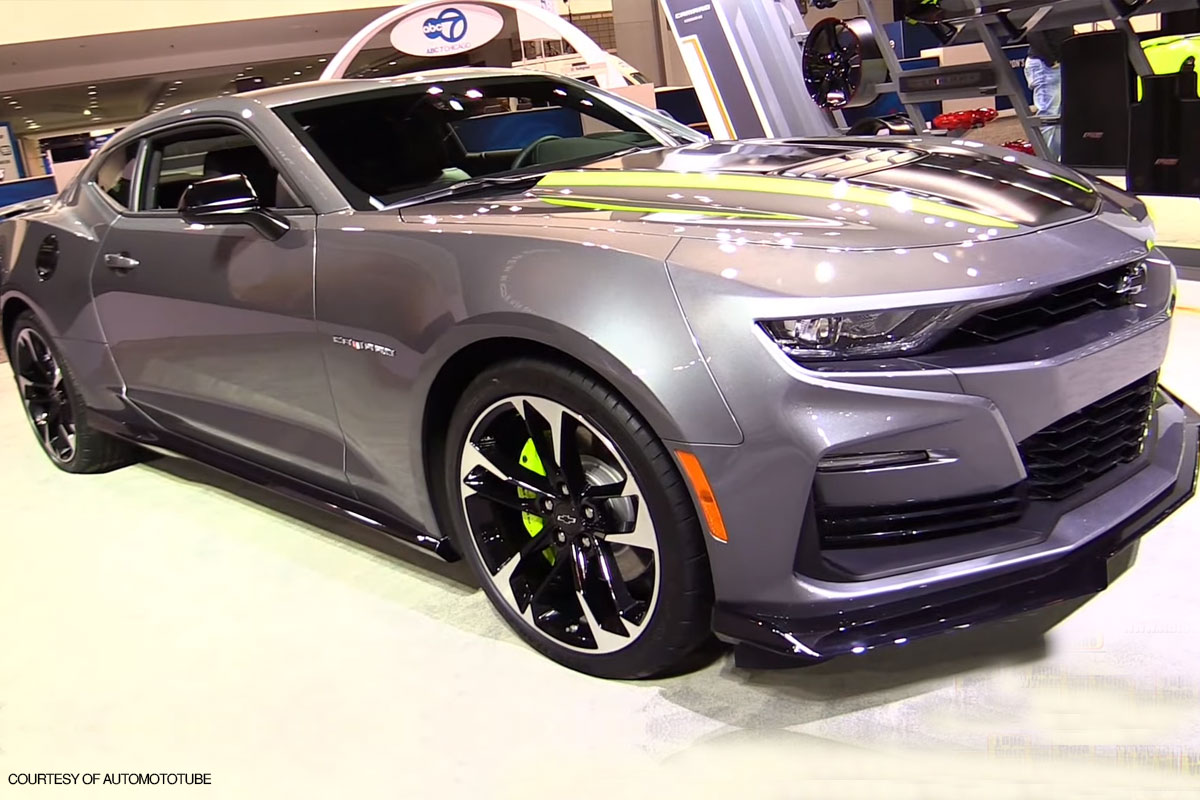
2017 Chevrolet Camaro SS

The sixth-generation began in 2015. The design utilized the GM’s Alpha platform, which was first used in the Cadillac ATS, making it much more dynamic than the last generation. These Camaro’s were lighter and more toned. The standard engine was a 3.6 L LGX V6, which had a moderate 335 horsepower. The SS model, on the other hand, used a 6.2L LT1 V8 engine with a 455 horsepower rating.
Up next: See the 2020 Camaro SS…
2020 Chevrolet Camaro SS

Last but not least, we are on the 2020 Camaro. In 2018, the Camaro went through mid-cycle alterations. Some of these include a revised exterior and interior styling, new wheel designs, and a new 1LE Performance Package, to name a few.
The SS also saw a new performance hood plus 10-speed automatic. With the 2020 model, the front bumper of the SS is now colored, and the Chevy logo moved to the upper grille. We cannot wait to see what comes next.
